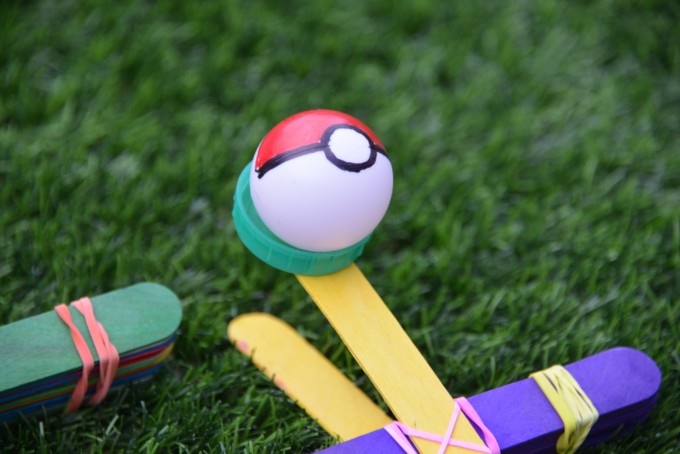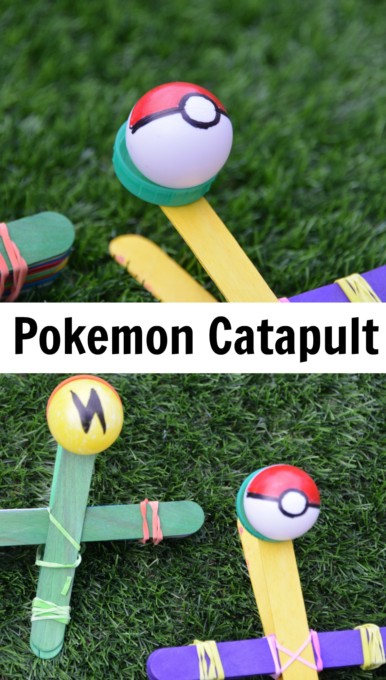This fun Pokemon catapult is a great way for children to learn about the effect of angle and force on how a projectile flies through the air. They are super easy and quick to make with lots of opportunities for further investigation.
How to make a Pokemon catapult
Materials
Wide lollysticks
Elastic bands
Other items to test
Double sided tape
Milk bottle top
Sharpies to decorate
Instructions
Follow the video below to construct your catapult
Investigation Ideas – remember to only change one variable at a time
What happens if you add more lollypop sticks to the central core of the catapult?
What happens if your catapult end is shorter?
Would a smaller or lighter ball travel further?
Can you make a different style of catapult? We have some more catapult ideas in this post.
Can you make a giant catapult?
Why does this happen?
When you push down on the milk bottle top, the lolly stick catapult arm bends, giving it energy, when the arm is released the energy is released and transferred to the ping pong ball which flies through the air.
The further down the lolly stick is pushed the more force is used, which gives the lolly stick more energy to transfer to the ping pong ball, meaning it travels further.
Links to Maths
Create a target with different numbers on different areas, use the catapult to aim the ping pong ball at the target. Add your scores together each time.
Can you add areas on the target where if you hit that area your score is doubled or halved?
Can you measure how far the ping pong ball has travelled, what will you use?
Last Updated on August 13, 2016 by Emma Vanstone



Hi! I’d love to do this project with my teens this summer at my library. May I use this image to promote the program on the library’s social media pages and post flyers around the library?
Sincerely,
Krystal
Of course you can! Thank you for asking.
How many sticks are stacked together in the big bundle?